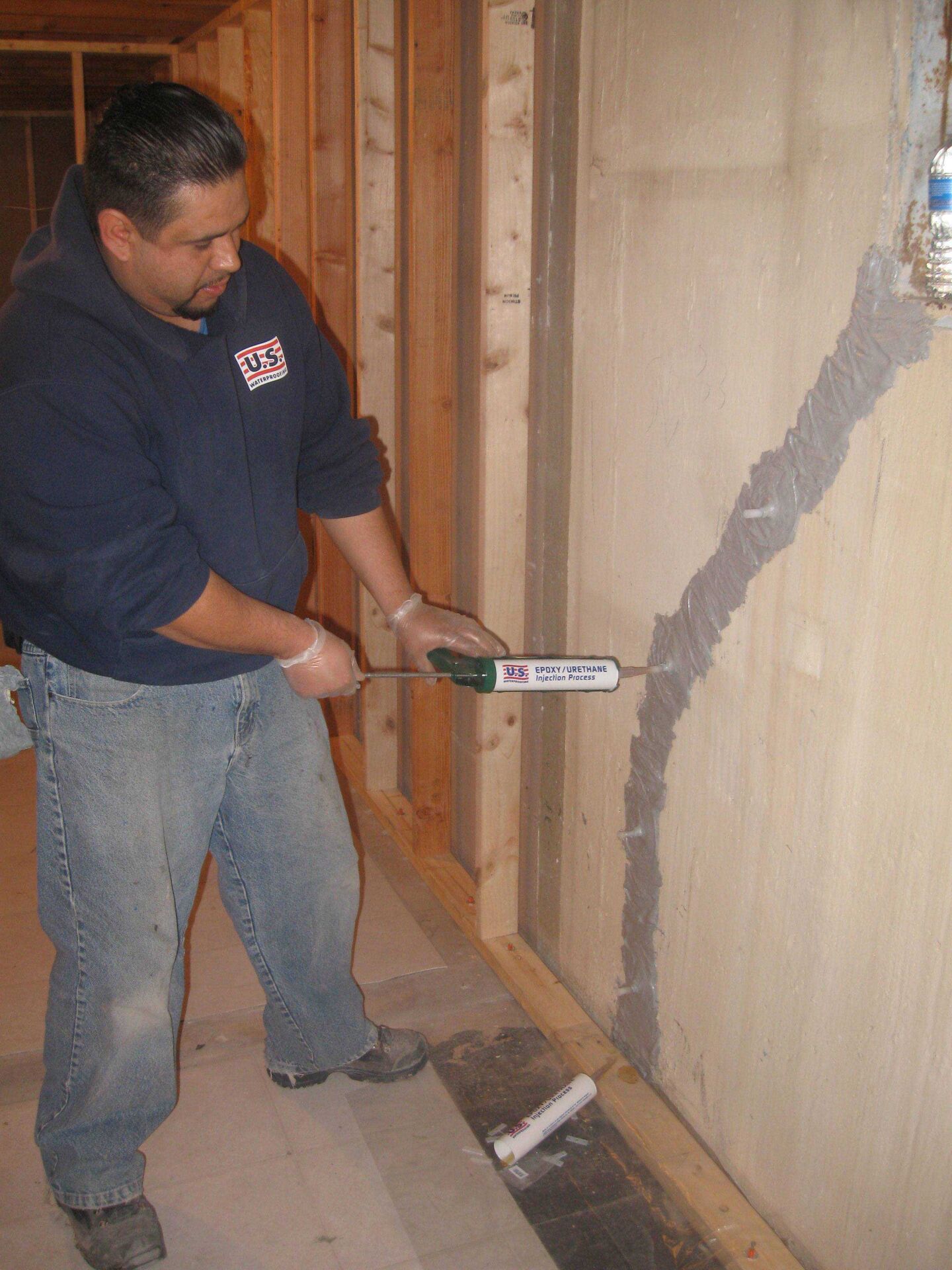Waterproofing a Basement from the Interior

Basement waterproofing goes back a long way, just about as long as people have wanted their basements to be something other than damp, smelly caves. Like any other business, it has its traditions and many old-timers in the waterproofing business will be quick to tell you that “the best way to waterproof a basement is from the exterior.”
I won’t argue that exterior, or “positive side” waterproofing isn’t a great way to ensure a dry basement. However, it’s certainly not the only way and it’s not the best method in all situations. There are lots of very effective ways to waterproof your basement that don’t require excavating around your foundation because they’re done from inside.
Foundation Crack Repair
By far the most common source of basement water seepage is a crack in a poured concrete foundation wall. These cracks can occur from shifting or settling soil, which may be in turn caused by soil desiccation or other factors. When a crack begins, it may take a while to open up all the way from the exterior of the wall to the interior but, when it does, in comes the water.
Foundation cracks can be effectively repaired from the inside by injection. Epoxy used to be the preferred material but it tended to crack if further movement of the wall occurred. Today’s method is to inject an expanding urethane material into the crack and fill it all the way to the outside soil, stopping any further seepage. The urethane material remains flexible and moves with the wall, preventing further cracking.
Interior Drain Tile
Drain tile, or “French drain,” has been used to prevent water infiltration for a long, long time. The old-timer mentioned earlier was no doubt referring to the placement of drain tile on the exterior of a home, which requires excavation around the foundation all the way down to the footings. This is certainly an effective remedy for many seepage problems but it should be used only where needed because of the costly and time-consuming process of installing it.
Drain tile can be efficiently placed on the interior of a basement, where it will not only drain away water that would otherwise seep in through the cove joint but will relieve hydrostatic pressure under the basement floor, eliminating water infiltration through cracks there. It does require excavation but the process is far simpler and faster – the basement waterproofing crew breaks through the thin basement floor and digs a trench around the perimeter about a foot deep. This allows the interior drain tile to be installed next to the footings where it will be most effective.
The drain tile itself is a plastic pipe with perforations that allow water to enter it. The pipe is wrapped in a “sock” of filtration fabric to keep out soil and dust and is buried in a bed of washed gravel that allows ground water to seep through to the pipe, which then carries it to a sump basin where a sump pump discharges it out of the basement.
Especially for those planning to finish their basement, a vapor barrier system is a great addition to interior drain tile. Heavy-duty plastic encapsulates the foundation walls from the inside to capture any future seepage and direct it down to the interior drain tile, assuring homeowners that their basement will remain dry.
Sump Pumps
A sump pump is the heart of an effective interior waterproofing system and is installed or replaced from inside the basement. However, a sump pump by itself won’t do much unless it is part of a drain tile system that collects seepage and channels it to the sump basin. A stand-alone sump pump will only handle water that is already on the basement floor that flows into the sump basin via gravity.
A backup sump pump protects your basement from water damage during a power outage or when your primary sump pump fails. Battery-only backup sump pumps kick in when the power goes off; AC/DC pumps work not only when the electricity is off but when the main sump pump dies an untimely death.
Whether your need for basement waterproofing is best met by interior or exterior protection, it makes sense to choose a basement waterproofing company that has experience doing both. At U.S. Waterproofing, we have ensured dry basements for more than 300,000 homeowners since our founding 55 years ago. If it makes sense to you to get free professional advice on the best way to keep your basement dry, please get in touch.




